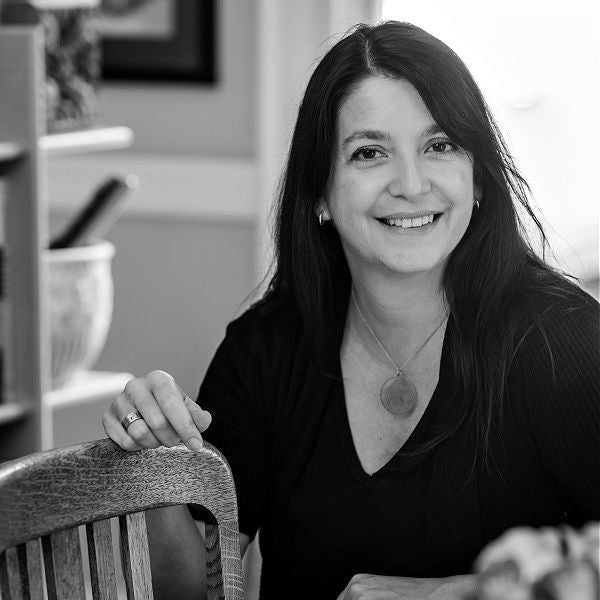GioGio Design co-founder Jessica Giovachino. Photographs courtesy of GioGio Design
3D printing is kind of like cloud computing. When you first heard about it, the idea seemed interesting, but you probably didn’t take it too seriously. And you may not have bothered to understand how it actually works, or to explore the logic behind the seemingly surreal invention; then suddenly, it was everywhere. 3D printing has pervaded our culture: it’s building our homes, helping surgeons, creating movie props, and even manufacturing custom shoes and clothing.
At its most basic, 3D printers construct three-dimensional objects from a computer-aided design (CAD) model or a digital 3D model. Then, the 3D model needs to be converted into a stereolithography (STL) file, which describes the surface geometry of a three-dimensional object; the STL file is then processed by a software program, which converts it into a series of layers and produces a G-code file that essentially translates the code into instructions for a 3D printer. From there, users print up their project. The final step: assembling the separate pieces.

Johannes F. Gottwald patented the first 3D printer in 1971, but even into the 1980s, 3D printing was in its infancy, and used only to create prototypes, never the real McCoy.
These days, artists like Jessica Giovachino use 3D printing to create whimsical home accessories and playful, beautiful jewelry for GioGio Design. We sat down with her recently to understand more about how she uses 3D printing to make her unique visions a reality.
NEW YORK MAKERS: How did you get interested in 3D technology?
JESSICA GIOVACINO: I’m an architect by training, and we began working with artisans and cabinet makers using 3D technology in the 2000s. I found it absolutely fascinating. I became interested in my own projects and began experimenting by making fruit bowls and wine racks.

JG: Yeah, it doesn’t quite work like that. There are laser and CNC printers, first of all. Laser 3D printers are for smaller projects with thinner material, whereas CNC is for thicker materials and is typically used for larger home projects like cabinets or furniture. You also have to have a solid understanding of design, and you have to be able to use software like Adobe illustrator and make sure that all of the proportions are correct, with the exact thickness of the wood or metal or polymer you’re using in mind. Otherwise, when you print it out, you won’t be able to fit it together. Still, even so, when it prints out and works, and you can put together a menorah or Christmas ornament it does feel like magic.


NYM: How did your practice evolve?
JG: I began making smaller home accessories in 2011, and I rented a 3D printer at a coworking space. But I was more and more interested in the process and inspired to grow the line, so I began experimenting with different materials and objects. Now, I make a lot of jewelry from wood and leather, and I love combining materials, too. For example, I have Christmas ornaments in cherry, walnut, and maple. Oh, and I love using acrylic because it comes in so many colors. Slowly, the business built up, and I began getting wholesale commissions. My work is in the Hudson Yards’ gift shop, and at the Chicago Architecture Center, which means so much to me as an architect. And these days, I’d say half of my business is devoted to architecture, half to my line of home accessories and jewelry.

NYM: Would you ever buy your own printer?
JG: Actually, I did. A few years ago, the space from which I was renting the printer closed. And I found that renting printers elsewhere was becoming increasingly challenging. I had to work around them, and my clients wanted orders quickly. The pandemic forced my hand, and, a few months ago, I bought a laser-printer myself (which is not technically a 3D printer), and I’m so glad I did. It has opened up opportunities for new commissions that I may not have taken on otherwise. It has also allowed me to push my creative process and boundaries to experiment in a way I never would have been able to before.


NYM: Your work is so whimsical and evocative of the natural world. What inspires you?
JG: Architecture inspired by the natural world often inspires me. I love Frank Gehry’s flowing style, Frank Lloyd Wright’s attention to patterns, and Gaudi’s incredible blend of styles, patterns, and mosaics.
NYM: Would you like to work on any other types of objects?
JG: Absolutely. I have two grown children, but I’ve always wanted to make old-fashioned toys. I’d also love to get a CNC printer one day and make larger objects. I have been able to make smaller tables, candle holders, tea lights, all kinds of jewelry already. I’m excited to see where my inspiration and clients take me next.
--
Want to try 3D printing yourself? You can. 3D printers are available for purchase, starting at around $120), or you can use a third party-owned printer or service to try it out. You can find a place near you by going online. UPS offers 3D printing technology for prototypes or objects in a day. In addition, specialty orgs like Makelab in New York City, work with individuals and businesses to create 3D printed objects for experienced printers and those who are still wrapping their minds around this astounding, inspiring tech-of-the- future that’s here and now.
Below, Giovachino shares her process with us.


Leave a comment